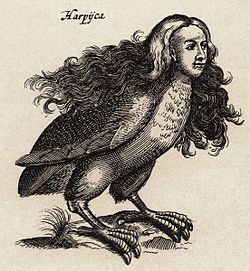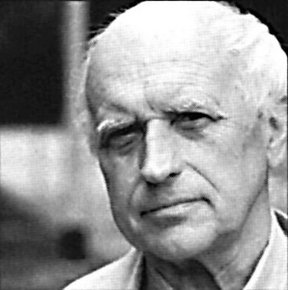I first came across the animated shorts of Belgian filmmaker, Raoul Servais (b.1928), while doing research for an SVA lecture on Surrealism. My Bing video search led me to Harpya (1979), an eery, circular story about a lonely, forlorn man and a harpy. Harpies are the legendary bird-women/winged spirits of Greek mythology who, at Zeus’s behest, perpetually steal the food of Phineas, a prophetic Thracian king, banished to an island for revealing too much. Or something like that. I like to think of harpies as the original femme fatales.

Anyway, in the film, the man – a hapless moustachioed protagonist, out on a midnight stroll – unexpectedly encounters the harpy as she’s being drowned in a fountain by an unknown assailant. He rescues her, and brings her home. There, the strange creature’s ravenous appetite leads to a series of darkly absurdist events that frighten the man, who tries to escape. I won’t reveal the ending, which is, as indicated above, a return to the beginning, but suffice it to say that I loved the film instantly! It was a perfect example of the surrealist legacy – a short-lived movement doomed by a dogmatic leader (I’m not a fan of Breton) – both in its uncanny narrative and experimental technique. Wikipedia describes the latter as consisting of “a 35mm color front-projection of the [human] characters onto a multiplane filmed, black velvet background”. Perplexed yet captivated, my class, well, ate it up:) After that, I became obsessed with seeing as much of Servais’s work as I could, and learned that not only was he a founder of Europe’s first school for animation at the Academy of Fine Arts in Ghent, but a pioneer of the genre. The sound design in these shorts is also fab. Still, despite numerous awards won in the 1960s-1970s, he’s not very well known. Sadly. For more information about his evolution, I recommend this 1996 interview by Philippe Moins, and checking out the filmmaker’s site http://www.raoulservais.be/.
What follows here is a mini-retrospective of my favorite works (that I could access online), each accompanied by descriptions from the book Raoul Servais, A Painter-Filmmaker’s Journey by Philippe Moins and Jan Temmerman (1999) taken from the website, The Awn Showcase, except the last. As you will see, Harpya was atypical of Servais’s previous work, defined by a more light-hearted, poetic approach, but in an effort to be faithful to the path of discovery, I’ve chosen to present the works in the order I first saw them. ENJOY!!
HARPYA (1979) **
“When ‘Harpya’ is shown on screen, most of those who had known Servais are shocked. A salutary shock, as it delivers him the Palme d’Or in Cannes. No more nice poetic stories, no more transparent parables that clearly reveal a message: ‘Harpya’ is a ‘punch in the face.’ Two characters run into each other: a Belle Epoque middle-class man, wearing mustache, straw hat and striped suit; and a chimera, a harpy that steals the bread from his mouth before eating him partly and turning him into a creature without legs. Servais invents an entirely personal technique and style, choosing for a personal version of the front-projection and ‘scotch lite’ techniques. The characters are shot with a 35mm camera, in color. In a space draped in black velvet, all is masked, except that which is intended to be exposed to film. The result is projected in color on the multiplane. With this new technique, he succeeds in creating an entirely personal new style, which at the same time applies photographic shots of the characters as well as of parts of the backgrounds and a jolting movement, which gives the ensemble an unreal impression. At the same time he realizes that he will not be able to continue using this technique, as it is slow and fastidious. He already has another technique in mind: shoot the characters and print them on cellophane sheets that are colored on the back side, marked and placed, and can be filmed on backgrounds – an entirely new process, registered as ‘Servaisgraphy.'”
http://www.youtube.com/watch?v=31andUed8sw
CHROMOPHOBIA (1966) **
“An army of small, all identical, angular characters, enters upon a struggle against anything that bears colors, blaming the world that is Servais’ world, which is an allegory of a civil society, made of stylized Flemish cities, merry-go-rounds, Jack Puddings and little girls carrying balloons. Behind apparent simplicity of the plot and the commonplace universality of the message, ‘Chromophobia’ hides a formal complexity and symbolism that were already present in ‘The False Note.’ The use of a vocabulary of graphic signs, various symbols, treated very geometrically, almost like ideograms and oppositions are the result of a fully mastered choice. In order to achieve this, Servais has set up an effective system, in which an infallible rhythm allows ideas and gags to come together in accordance with an internal logic typical for animation, without ever leaving dead moments or even a pause. Each shot contains dynamic information that calls for what will follow. The film, immediately recognized for its innovative value, collects a dozen of prizes at festivals, among which the prestigious ‘Primo Premio’ at the 1966 Venice Biennale.”
PEGASUS (1973) **
“‘Pegasus’ is the story of an old shoeing-smith who is entirely surpassed by technology, and who revolts in his own way, absurd and unreal, by making metallic horses. We are shown the reaction of a solitary man opposing against society, a man who performs a repeated act, obsessed, determined to counter the present order of things. To make ‘Pegasus’, Servais turns back to one of his old passions: expressionism. He considers, quite logically, that a visual form close to the aesthetics of Flemish expressionism would be prefectly adequate for his subject. The very pictorial material of the backgrounds causes the printing of the characters, superimposed in several layers of acrylic gouache on the celluloid, to be extremely fastidious. It reaches the limit of sophistication feasible for a modest budget production.”
http://www.youtube.com/watch?v=aTzdWZEG2NE
TO SPEAK OR NOT TO SPEAK (1970)
“In this film, on the contrary, spoken language is in the center of a film that tells much about Servais’ ambiguous position towards the notion of ‘language’ itself. The entire film is about the a ‘F.A.Q.’ – the kind of question the media shower upon us, willy-nilly, everyday (‘What is your opinion on the actual political situation?’). Servais is still concerned with ethical questions: what is the role of the artist in society? Which attitude should he adopt when confronted with totalitarianism and with ‘silent majorities’? At the same time it should be underlined that these ‘committed’ intentions do not prevent ‘To Speak Or Not To Speak’ from being one of his funniest films Servais has ever made.”
ATRAKTSION (2001)
Synopsis:
A couple of downcast prison inmates work their way through the most desperate of landscapes. One of them ventures to look up towards a shining light. Is that their delivrance? He decides to go for it.
Raoul Servais:
“Atraksion meant my ackownledgement of digital technique. My contribution was limited to giving artistic directions to computer operators, wherein I had to admit that their knowledge was far greater than mine will ever be.”
Awards:
2001: Special Mention: UIP Competition European Film Academy – Ghent (Belgium).
2001: Special Prize of the Jury: International Film festival – Valladolid (Spain).
DVD link: http://www.dvdbeaver.com/film/DVDReview3/RaoulServais.htm


